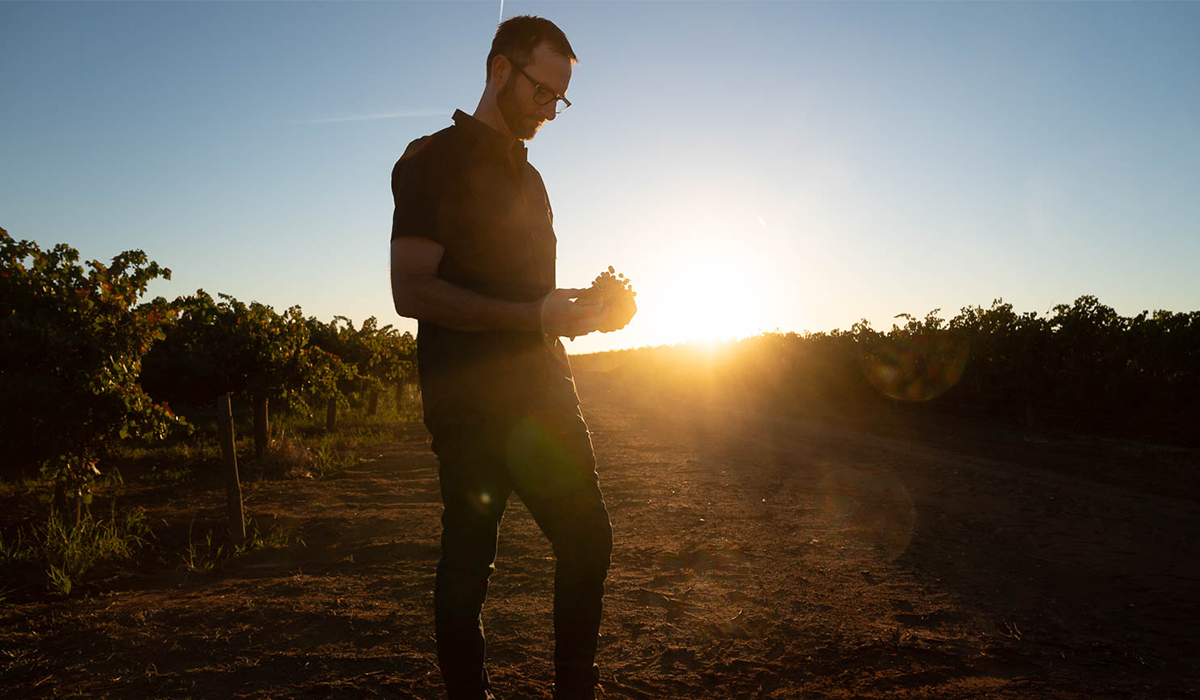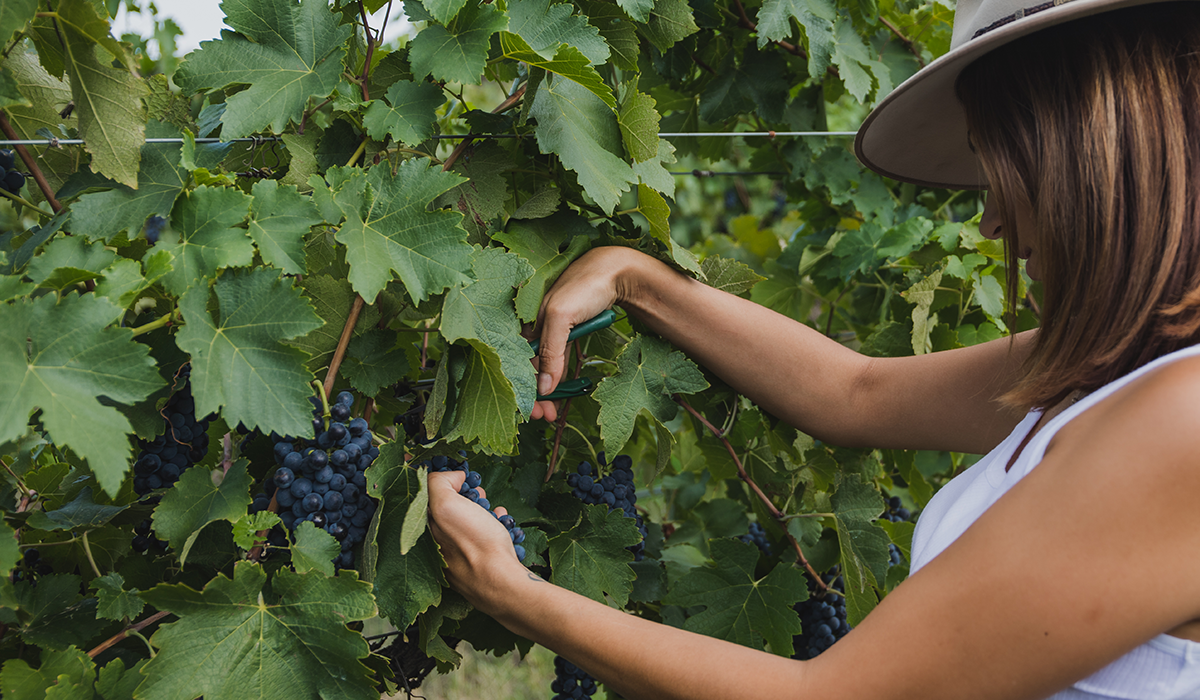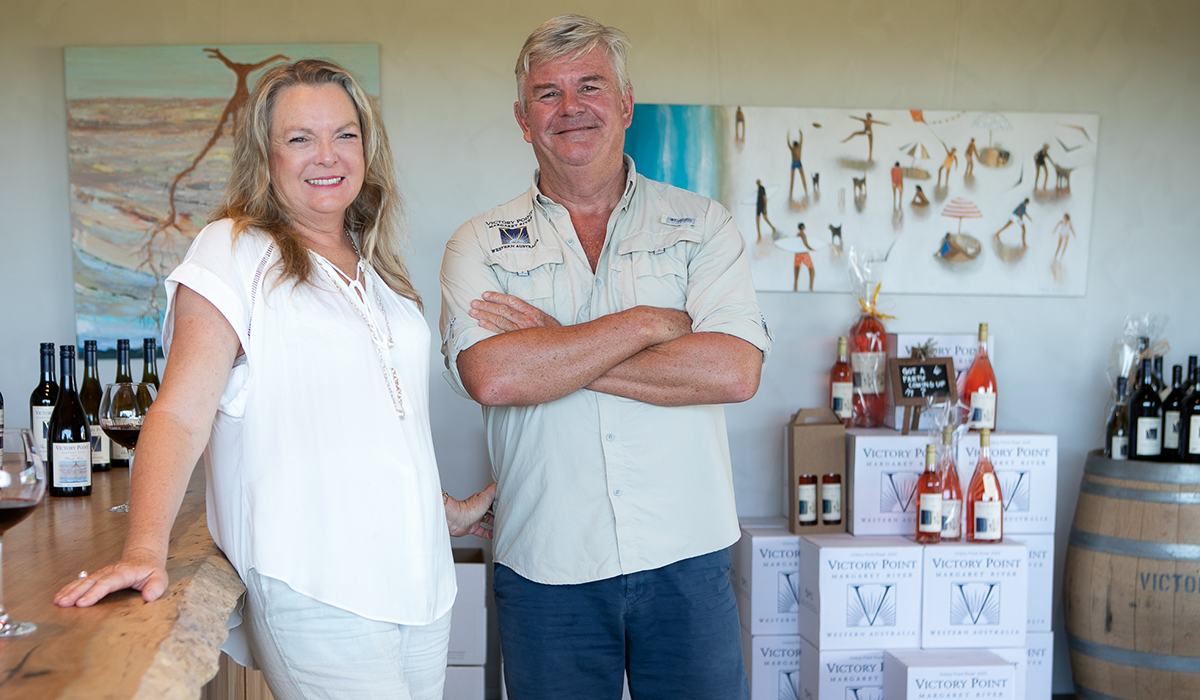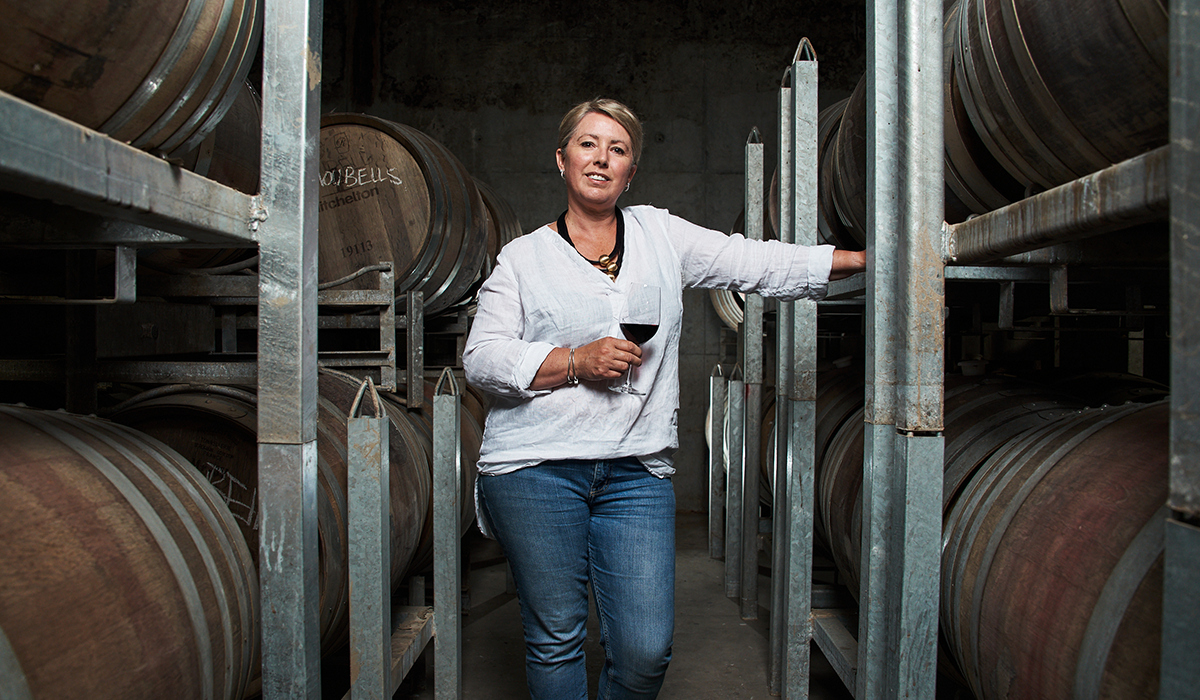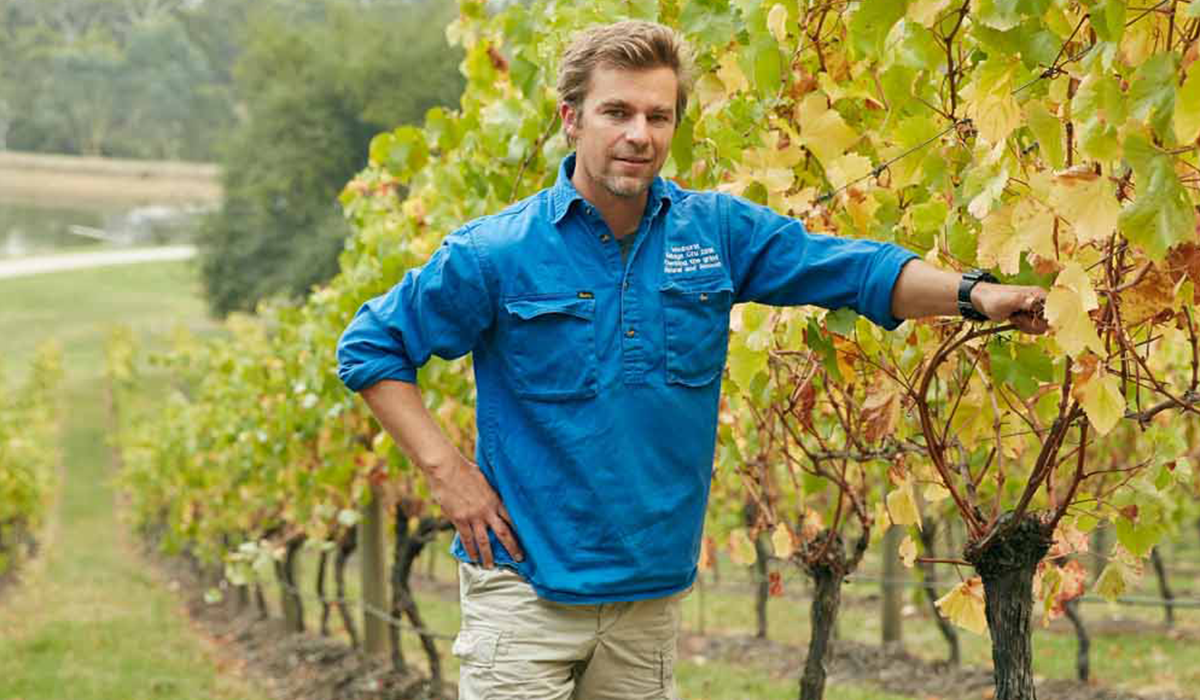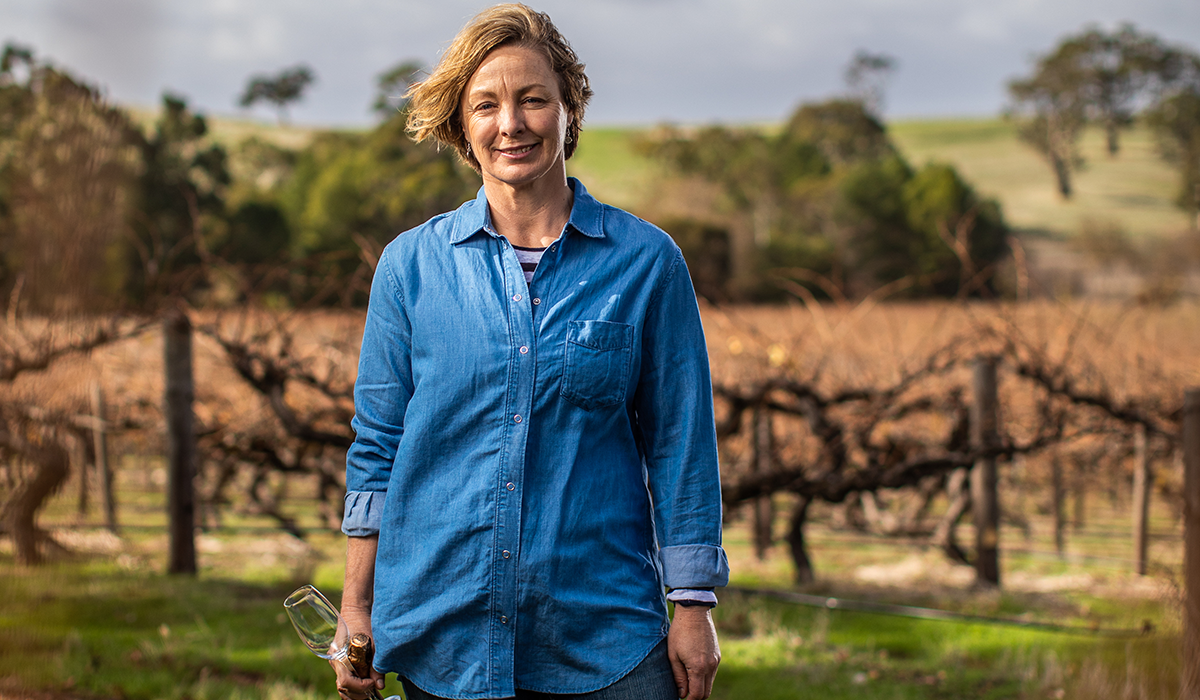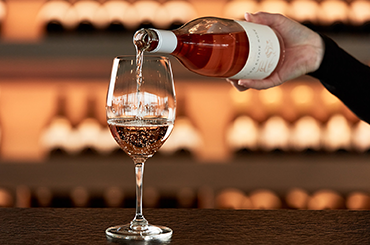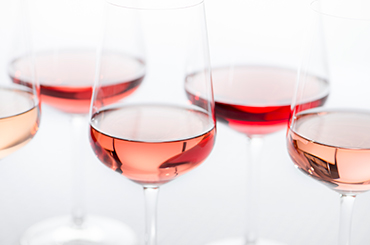Rosé styles can span from crisp and bone-dry to wines with fruity notes and a sweet influence. The main varietal will also have a significant impact on the style of rosé.
Popular varietals used to make rosé include grenache, pinot noir, cabernet sauvignon, shiraz, sangiovese and nebbiolo.
While rosé can sometimes be made as an afterthought, these seven winemakers produce considered rosé wines that are made with intention. We asked them what makes a great rosé.
Sam Brewer – Yarran Wines, Riverina NSW
H. What makes your rosé unique?SB. Montepulciano has found a familiar home within Riverina – a wine region that holds strong links to its Italian heritage. It's the grape used to make our rosé that makes it unique – an experiment gone (really!) well is often how we refer to the wine.
Montepulciano has been found in our region’s vineyards for many years, and it thrives in the hot and dry conditions Riverina is famous for. Montepulciano rosé was a rare style to track down in 2016 (when we first produced it), not even a handful of producers were making one, now it’s one of our most in demand wines that sells out each vintage.
H. How do you approach the winemaking process?
SB. A Few Words is crafted from a single parcel of fruit that is grown specifically for the purpose of creating this dry, Provence style. Our entire planting of montepulciano goes solely into producing this rosé, so the wine is never a red wine afterthought.
Minimal skin contact is used to achieve the pale salmon hue. The style doesn't change too much with each vintage, we contemplate how much skin contact it receives each year and debate the colour of each vintage, but it is usually pretty similar.
Raquel Jones – Weathercraft Wines, Beechworth VIC
H. What makes your rosé unique?RJ. Our rosé is made using 100 per cent shiraz and is produced using the direct press method rather than saignée (a method embraced here in Australia). Direct press and an earlier harvest produce a paler rosé that is lower in alcohol, but has strong fruit intensity, fresh acidity and significantly less tannin.
Inspired by rosé from the south of France, I wanted to make a rosé using a classic grape variety like shiraz. In Australia, shiraz is not often used for rosé because it's an expensive variety to grow and the price points for premium Australian rosé are only just starting to edge above $35 a bottle.
H. How do you approach the winemaking process?
RJ. A portion of shiraz (specifically to be used in my rosé) is harvested earlier in the season for greater natural acidity and lower alcohol. Shiraz can lend itself to green, herbaceous characters when harvested too early, especially when pressing whole bunches like we do. The ideal harvest is a small window of opportunity – one that needs to be timed perfectly.
Weathercraft wines reflect styles I enjoy drinking and methods that inspire me. Making rosé isn’t an exception. I never wanted to make rosé as a byproduct of red wine making or a ‘fragmented’ wine. I wanted a sophisticated wine with its own story. Choosing to use shiraz, picking earlier, using a mix of yeast and vessels is worth it for the quality.
Judith and Gary Berson – Victory Point Wines, Margaret River WA
H. What makes your rosé unique?JB & GB. All varietals are grown on our single (never-irrigated) vineyard in the Margaret River region. The pinot noir grows on a gentle, north-facing slope with rows running north to south, facing the cabernet franc and malbec that grows across the shallow valley.
The unique characteristics of the Victory Point rosé comes from the interplay between the three varieties used: pinot noir, cabernet franc and malbec. Each variety brings different qualities – the malbec brings juiciness, the cab franc brings a red fruit lift and the pinot noir is the backbone of the wine.
H. How do you approach the winemaking process?
JB & GB. Our rosé is made with intention. The fruit is chosen at the outset of harvest with a view of creating a balanced wine. The pinot was pressed, settled and fermented in neutral oak barrels and matured on yeast lees (with some stirring for four months). This process gives the wine a beautiful structure and texture. The cabernet franc and malbec were co-fermented before being blended with the pinot to create a beautifully balanced wine.
Each vintage is different, each year the wine has slightly varied blend percentages and as a result every Victory Point Rosé is slightly different. The interaction between the three varieties remains a constant – the common thread.
Tod Dexter – Pt Leo Estate, Mornington Peninsula VIC
H. What makes your rosé unique?TD. This rosé is textural yet refreshing, and is 95 per cent pinot noir and 5 per cent pinot gris.
H. How do you approach the winemaking process?
TD. We pick with the aim of keeping the alcohol close to 13 per cent and to avoid deep colour, and two per cent of the juice is fermented on pinot gris skins to build texture.
We have now settled on the most suitable pinot noir clones and blocks on the estate to enable us to make the style we're after. We prefer spice over primary fruit both on the aroma and palate, mid-palate structure and a refreshing finish are key to our house style.
Natalie Cleghorn – Mitchelton, Nagambie Lakes VIC
H. What makes your rosé unique?NC. The 2022 Preece Rosé is estate grown. Nagambie is a small region and it's nice to see expressive and vibrant rosé style wines coming from here.
When picked for rosé, grenache offers flavours of juicy red berries, such as strawberries and raspberries, but still retains tannins. The other lovely thing about grenache as rosé is the beautiful colour.
H. How do you approach the winemaking process?
NC. My approach when making rosé is the same approach I take to all of my winemaking – the aim is to create fresh, vibrant wines with lovely elegance and tension. Timing is the key when making rosé, timing of picking for optimal fresh flavour, timing of skin contact for colour and tannin extraction, and seeing the final beautiful colour post fermentation is exciting.
I find that my style is evolving with each vintage. I learn more about how I can challenge myself using techniques such as juice stabulation (pre-ferment less contact) and how wild fermentation can aid mouthfeel. Rosé lovers are turning to lighter coloured wines, so one challenge is making delicious wines with minimal skin contact.
Simon Steele – Medhurst Wines, Yarra Valley VIC
H. What makes your rosé unique?SS. Our Estate Rosé is 55 per cent cabernet sauvignon and 45 per cent shiraz. We planted these varieties in 2000 and 2001 and believe they are perfect for our style. Our rosé is one of the only single-site, handpicked, brilliantly pale and dry styles on the market.
Cabernet sauvignon has tight spherical berries that produce little juice but high flavour in the floral and redcurrant spectrum. Shiraz berries are twice the size and shaped like footballs – flavours of plum, strawberry and raspberry come from the shiraz.
Many rosé wines are late additions to the range – a bleed off of juice from a red fermenter or from cheaper fruit. We treat ours with great respect. The bunches are all handpicked to show off the true varietal characters and are whole bunch pressed with minimal sulphur additions. It’s a precise style we aim for and have been achieving for 19 vintages.
H. How do you approach the winemaking process?
SS. We take a gentle approach to winemaking, handpicking and low juice extractions in the presses. We whole bunch press to extract the 500l/t required at low pressure, as the stalks act as drain point for the juice to fall into the tray and into tank. We mainly ferment in tanks on light solids but 5–10 per cent end up in older French barriques to enhance complexity. We aim to maintain our style each vintage.
Jennifer Doyle – Jansz Tasmania, Northern Tasmania
H. What makes your rosé unique?JD. This rosé is predominantly pinot noir selected from plantings across northern and southern Tasmania that show the best aromatic expression of the variety. A small amount of chardonnay (eight per cent) compliments the pinot with its elegance and crisp acidity.
This vibrant and delicate non-vintage rosé comes from the very best of our Tasmanian sparkling vineyards. The Special Edition Premium Rosé is crafted in the Old World style with inspiration from innovative techniques and knowledge.
H. How do you approach the winemaking process?
JD. Our Jansz Tasmania Special Edition Premium Rosé, as the title suggests, is a non-vintage sparkling. So we have many blending options – different vintages from diverse vineyards and varietal mix are assembled in varying percentages to achieve our consistent house style.
The process is handpicking, gentle whole bunch pressing, cool fermentation, 100 per cent malolactic fermentation, complex assemblage and extended ageing on lees after bottle fermentation – each of these elements combine to produce a stylish and complex wine. Batches are kept separate during winemaking to maximise blending options and complexity in the final wine. We release this sparkling with three months of bottle age. Vintage to vintage, if anything is changing, it's the subtle reduction in dosage toward an even drier, fresher finish.
